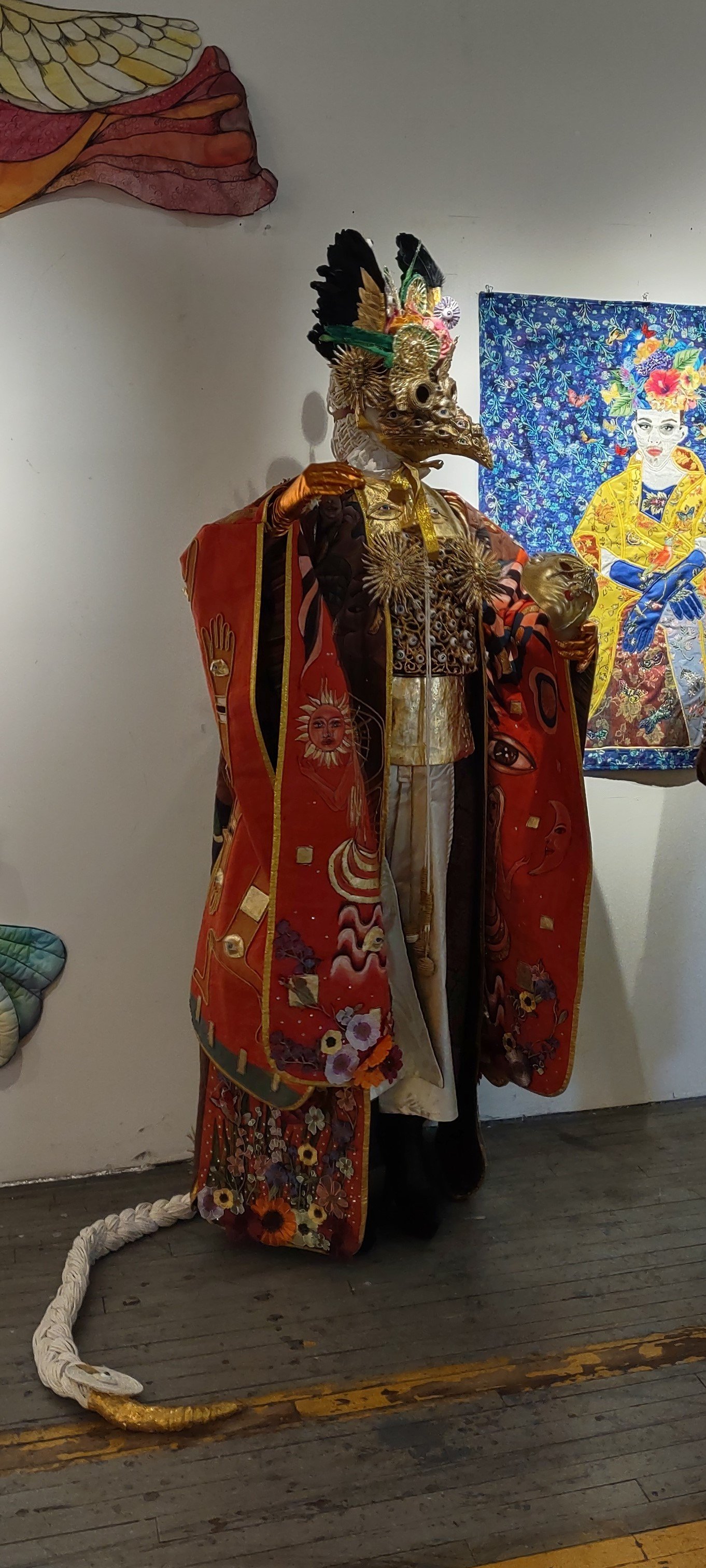Carlos Biernnay
My artistic production emerges from my individual vision of reality, a vision with which I operate from the conceptual ironies created from the investigation of the environments in which I am immersed. I appropriate and alter visual elements known to all, such as icons from mass culture, religions, references to art history, elements of nature or individual and collective memory, impacted from my life story, living from childhood under the brutal dictatorship of Agusto Pinochet in Chile. are a significant part of my individuality and subjectivity.
Kimono 1 was inspired by Ibsen’s play the Doll House taking place in the mid 1800’s, during a time when women had few rights or economic autonomy. All financial decisions were made by men, husbands, fathers, male siblings, etc. The heroine, Nora risks all by forging the signature of her father on a document to acquire a loan to pay for her husband’s medical care, to cure his tuberculosis. For her socially unacceptable actions of the time, Nora is rebuked by her husband, claiming she is unfit to be a wife and mother. She realizes throughout her life, she has been treated like a doll, a plaything by men in power, valuing their social status and pride over the relationship of a loving wife and consideration for her as an equal person. She deicides to abandon this life, her duties to her husband and children to tend to the duties she has, to fulfill her personal destiny.
The kimono is an opulent unisex garment, worn in the opera Turnadot, an opera with significant meaning to me, where the roles of decision-making are reversed. When worn this living sculpture, made specifically to be premiered in Venice represents the empowerment of women in the face of adversity. Having grown up in a home where there was no patriarchal figure, I created a different way of appreciating things and admiring those women who were in charge of raising me and my education. The imagery also includes details from the ancient indigenous people of my home in Quillota Chile.


